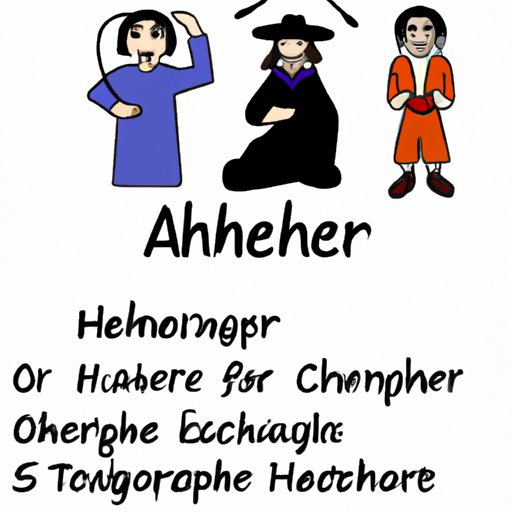Introduction
Archetypes are recurring patterns, symbols, or motifs that appear in literature and other forms of art. They are often used as a way to convey universal ideas and truths, allowing readers to connect with stories on a deeper level. By understanding what archetypes are and how they are used in literature, we can gain a better appreciation for the stories we read and the characters we encounter.
Exploring Archetypes in Literature
Archetypes can be found in many different types of literature, including poetry, drama, novels, and short stories. Common themes and characters often serve as archetypes, such as the hero, the villain, the wise old man, the damsel in distress, and the trickster. These characters, along with their associated stories, convey certain values or messages that can be interpreted differently depending on the context.
Examples of archetypes can also be found in classic works of literature, such as Homer’s Odyssey and Dante’s Inferno. In these works, the hero’s journey and the descent into hell are two of the most prominent archetypal stories. Similarly, modern texts like J.K. Rowling’s Harry Potter series feature archetypical characters and themes, such as the chosen one, the wise mentor, and the battle between good and evil.
By analyzing the use of archetypes in literature, we can gain insight into why certain stories resonate with readers more than others. For instance, the hero’s journey is a popular archetype because it speaks to our need for adventure and our desire to overcome obstacles. Similarly, the battle between good and evil is an archetypal story that appeals to our sense of justice and our need for order.
Examining the Role of Archetypes in Literature
Archetypes play an important role in literature by helping to shape characters and create meaningful connections between them. By understanding the power of archetypes, authors can craft characters that are more believable and relatable. For example, if an author wants to create a heroic protagonist, they might draw upon the hero archetype and use it to develop the character’s backstory, motivations, and goals.
Archetypes can also help authors create tension and conflict between characters. By using archetypes to establish opposing forces, authors can create dynamic stories that explore complex themes and capture readers’ attention. One example of this is the battle between good and evil, which is often used to explore the moral choices characters make and the consequences of those choices.
Conclusion
In conclusion, archetypes play an important role in literature by helping to shape characters and create meaningful connections between them. By understanding what archetypes are and how they are used in literature, we can gain a better appreciation for the stories we read and the characters we encounter. By examining the power of archetypes in literature, we can gain insight into why certain stories resonate with readers more than others.
Ultimately, archetypes are powerful tools that authors can use to explore complex themes and create compelling stories. By understanding the role of archetypes in literature, we can gain a deeper understanding of the stories we read and the characters we encounter.
(Note: Is this article not meeting your expectations? Do you have knowledge or insights to share? Unlock new opportunities and expand your reach by joining our authors team. Click Registration to join us and share your expertise with our readers.)
